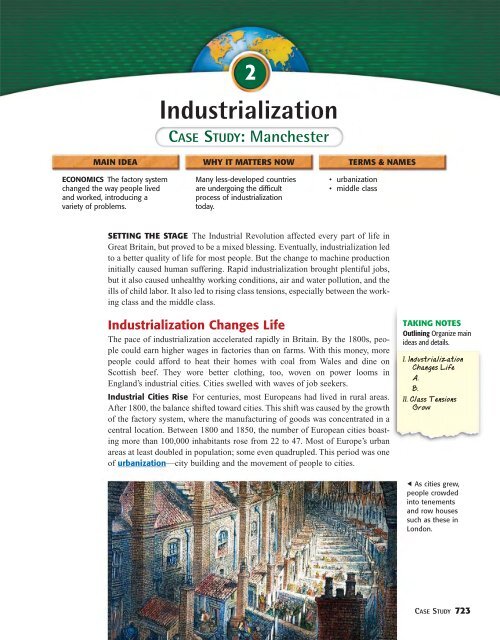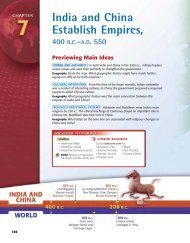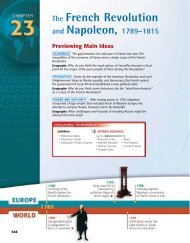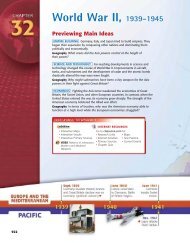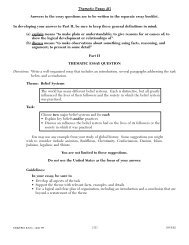The Industrial Revolution, 1700– 1900 Previewing Main Ideas
The Industrial Revolution, 1700– 1900 Previewing Main Ideas
The Industrial Revolution, 1700– 1900 Previewing Main Ideas
Create successful ePaper yourself
Turn your PDF publications into a flip-book with our unique Google optimized e-Paper software.
2<br />
<strong>Industrial</strong>ization<br />
CASE STUDY: Manchester<br />
MAIN IDEA WHY IT MATTERS NOW TERMS & NAMES<br />
ECONOMICS <strong>The</strong> factory system<br />
changed the way people lived<br />
and worked, introducing a<br />
variety of problems.<br />
Many less-developed countries<br />
are undergoing the difficult<br />
process of industrialization<br />
today.<br />
• urbanization<br />
• middle class<br />
SETTING THE STAGE <strong>The</strong> <strong>Industrial</strong> <strong>Revolution</strong> affected every part of life in<br />
Great Britain, but proved to be a mixed blessing. Eventually, industrialization led<br />
to a better quality of life for most people. But the change to machine production<br />
initially caused human suffering. Rapid industrialization brought plentiful jobs,<br />
but it also caused unhealthy working conditions, air and water pollution, and the<br />
ills of child labor. It also led to rising class tensions, especially between the working<br />
class and the middle class.<br />
<strong>Industrial</strong>ization Changes Life<br />
<strong>The</strong> pace of industrialization accelerated rapidly in Britain. By the 1800s, people<br />
could earn higher wages in factories than on farms. With this money, more<br />
people could afford to heat their homes with coal from Wales and dine on<br />
Scottish beef. <strong>The</strong>y wore better clothing, too, woven on power looms in<br />
England’s industrial cities. Cities swelled with waves of job seekers.<br />
<strong>Industrial</strong> Cities Rise For centuries, most Europeans had lived in rural areas.<br />
After 1800, the balance shifted toward cities. This shift was caused by the growth<br />
of the factory system, where the manufacturing of goods was concentrated in a<br />
central location. Between 1800 and 1850, the number of European cities boasting<br />
more than 100,000 inhabitants rose from 22 to 47. Most of Europe’s urban<br />
areas at least doubled in population; some even quadrupled. This period was one<br />
of urbanization—city building and the movement of people to cities.<br />
TAKING NOTES<br />
Outlining Organize main<br />
ideas and details.<br />
I. <strong>Industrial</strong>ization<br />
Changes Life<br />
A.<br />
B.<br />
II. Class Tensions<br />
Grow<br />
As cities grew,<br />
people crowded<br />
into tenements<br />
and row houses<br />
such as these in<br />
London.<br />
▲<br />
CASE STUDY 723


